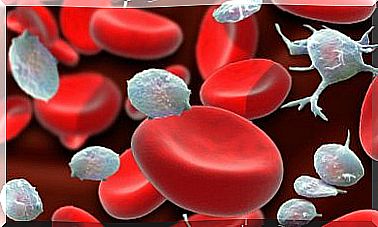Reward A Child: Know When To Do It

Rewarding a child is very common in traditional families. In fact, rewards are a technique that is generally used to educate, especially the little ones, as they serve as a parameter for behavior.
On the other hand, awards also act as a motivator. The logic is that, to develop a certain behavior, it is good to receive something you like.
In fact, it can be said that rewarding a child is the opposite of correcting them through punishment, thus being a positive technique. What child can resist this?
This learning and teaching process is usually based on different theories. Examples of this are the “Theory of Operant Conditioning and the Theory of Reinforcement,” both by Barrhus Frederic Skinner, a prolific psychologist and social philosopher.
References can also be found to the “Positive Reinforcement Theory” of Edward Thorndike, the father of modern educational psychology.
As well as “Theories related to motivation”, indicated for those who want to go deeper into the subject.
How Rewards Work in Children
Prizes are perfect for gradually turning certain actions into habits. In fact, by acting as a positive reinforcer, we encourage the behaviors we want our children to continue to practice.
Even if you apply the technique well, you can reinforce this behavior. Thus, over time, conduct will be reinforced and there will be no need to reward a child.

The technique is based on the fact that human behavior responds to external stimuli. In other words, if there is an encouragement, then there will be a response and a pleasant feeling.
So, if the stimuli are positive, most likely, the behavior will be repeated.
the motivation
On the other hand, incentives are related to motivation. No person is born with any degree of encouragement to achieve goals or results.
This motivation is acquired during childhood. In reality, there is a strong relationship between children who are strongly motivated to achieve goals and the education they receive from their parents.
Those who are concerned with raising their children with love, who promote independence and self-confidence, tend to have children who strive to reach their goals.
Now, before knowing when to praise a child, it ‘s important to know how we can use positive reinforcement.
How to use positive reinforcements
First of all, we should specify that positive reinforcement can be any activity your child enjoys. It is important to know that they can act as a reinforcement to reward the child.
For example, it would not be a good idea to give a little one a book if he enjoys playing football. Based on his tastes, you could buy him a ball, or enroll him in a regular football class, to get him motivated.
It may also work to allow you to do activities that your child enjoys. For example, going to the movies, watching TV, playing with the tablet, etc.

On the other hand, we don’t need to always reward the child with material gifts. We can also demonstrate approval and affection with a focus on behavior, not the way you are. For that, we can use words and praise.
An example could be “congratulations on what you’ve done” , “I’m very proud of you” , “Very good” . “I know you’ll make it” , among other phrases that can promote motivation in children.
When should we reward a child
To reward a child, it is necessary to do this immediately after he has performed the conduct we want to reinforce. What kind of behavior can it be? Everything will depend on the behavior of the little one.
Some ideas might be: stop swearing, keep your room organized, brush your teeth, do schoolwork.
It can also be helping around the house, tying shoelaces, among many other activities and behaviors.
In the beginning, it is convenient to explain and teach with the example of the behavior expected of the little one. If you notice he’s struggling, you can help him.
However, it is expected that the orientation will decrease until disappearing. For this, it is vital to analyze its evolution and reward the progress that brings it closer to the goal. Be patient, changes need time and reinforcement.
Method to reward a child
In addition, an article in the journal Saúde Mental proposes a series of steps to reward a child in a structured and effective way.
This method is based on a technique known as “Token Economy”, through which specific behaviors are taught to the little ones.

Every time the child behaves well, he receives a token with a certain number of points. You can then exchange them for a prize that was previously agreed upon. We’ll briefly talk about the guidelines below.
- Specify the behavior you want to change
- Identify the appropriate awards
- Administer the prize immediately
- Use different types of incentives so as not to tire the child
- Follow up with social incentives
- Calculate the amount of prize or incentive needed
- Progress from continuous reinforcement to intermittent reinforcement, favoring the internalization of behaviors
Conclusions
As you can see, rewarding a child requires analysis and effort on the part of the parents. This is necessary so that the reinforcement is geared towards the development of positive and useful behaviors.
While awards are often material, you can also use gestures or words that show love and pride to motivate you.
Also, while rewarding a child is a positive strategy, we must make it clear that rewards should only be used when necessary.
Otherwise, children will only want to do what we tell them to, to get what they want and not spontaneously.
Therefore, it is essential to evaluate aspects such as effort, work and constancy, in addition to the results.
And you, what do you think? When should we reward a child?









